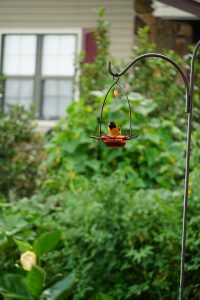 Migratory birds are threatened by industries and activities (hazards) that produce stressors. A stressor is any alteration of or addition to the environment that affects birds directly or indirectly by affecting their resources. Stressors can be natural (e.g., habitat alterations resulting from storms) or man-made (e.g., vegetation removal during project construction).
Migratory birds are threatened by industries and activities (hazards) that produce stressors. A stressor is any alteration of or addition to the environment that affects birds directly or indirectly by affecting their resources. Stressors can be natural (e.g., habitat alterations resulting from storms) or man-made (e.g., vegetation removal during project construction).
True estimates of avian mortality from various stressors are difficult to determine. However, recent studies have synthesized the best available data to estimated ranges of mortality to bird populations in North America from some of the most common, human-caused sources of bird mortality. These studies address only human-caused sources, not natural sources. Many additional human-caused threats to birds, both direct (causing immediate injury/death) and indirect (causing delayed negative effects to health or productivity) are not currently well researched or easily quantified. For instance, habitat loss is thought to pose by far the greatest threat to birds, both directly and indirectly, however, its overall impact on bird populations is very difficult to directly assess. For more information on the most common stressors to birds, visit the U.S. Fish & Wildlife Service Migratory Birds Program’s Threats to Birds webpage.
What Can Be Done Do to Reduce Avian Stressors?
Collaborative Partnerships
The U.S. Fish and Wildlife Service (Service) is involved with many successful bird conservation initiatives involving multi-organization collaborative partnerships can lead to conservation success.
Information, Tools and Guidance
Bird conservation partners are regularly working to provide information and assistance to industry and public seeking to develop projects in a manner that reduces impacts on birds and their habitats. Some of the resources that are available and are constantly being approved upon with partnership assistance, are voluntary guidelines, best practice recommendations, and information and resources for developers for conducting environmental reviews striving for bird-friendly projects. This information empowers the public to understand potential impacts from various activities and provides recommendations on how to avoid or minimize those impacts. In addition, systems like the Avian Knowledge Network (AKN) are designed to make access to bird data, project planning information, and other decision support tools more easily and readily available to biologists, developers, and others that need them for facilitating decision-making where bird conservation is concerned. Finally, the Service’s Migratory Bird Program offers training for industry and partners to help understand their legal responsibilities; know where to go to obtain the information and tools needed for successful bird conservation; and understands the benefits of partnerships and how to more actively take advantage of partnership opportunities.
How Can Individuals Help?
Everyone can help protect migratory birds. Whether it is taking actions around your home or workplace, designing bird-friendly projects, or just taking actions that reduce resource consumption. Every action is one step towards protecting migratory birds for future generations. A few simple actions that can be taken include:
- Participate in citizen science bird monitoring programs (e.g., eBird, Breeding Bird Survey, Christmas Bird Counts, Urban Bird Treaties)
- Reduce energy and water use
- Recycle and use recycled products
- Assess home and office for risk of bird/glass collisions and implement best practices
- Keep cats indoors
- Reduce use of chemicals in environment
